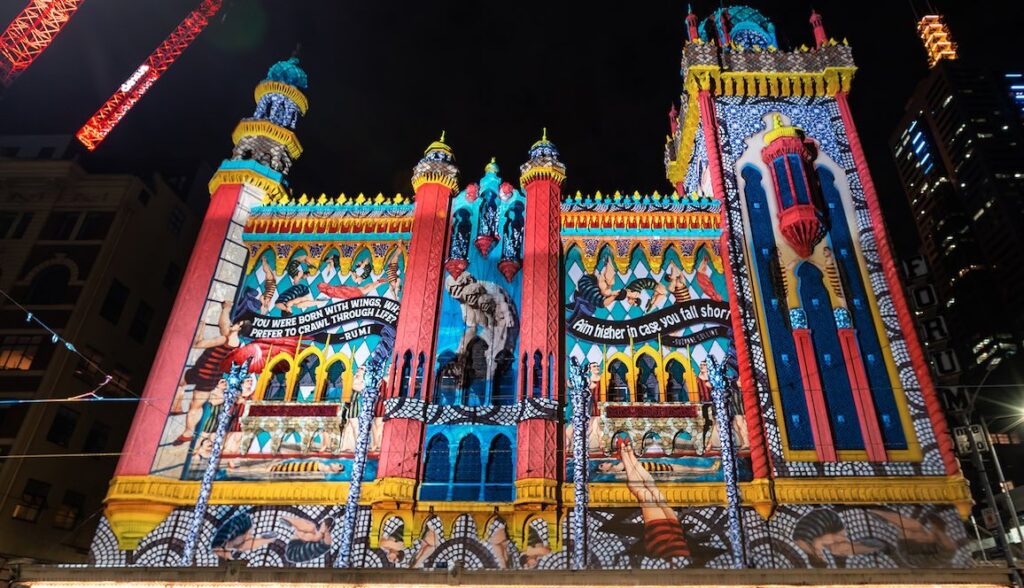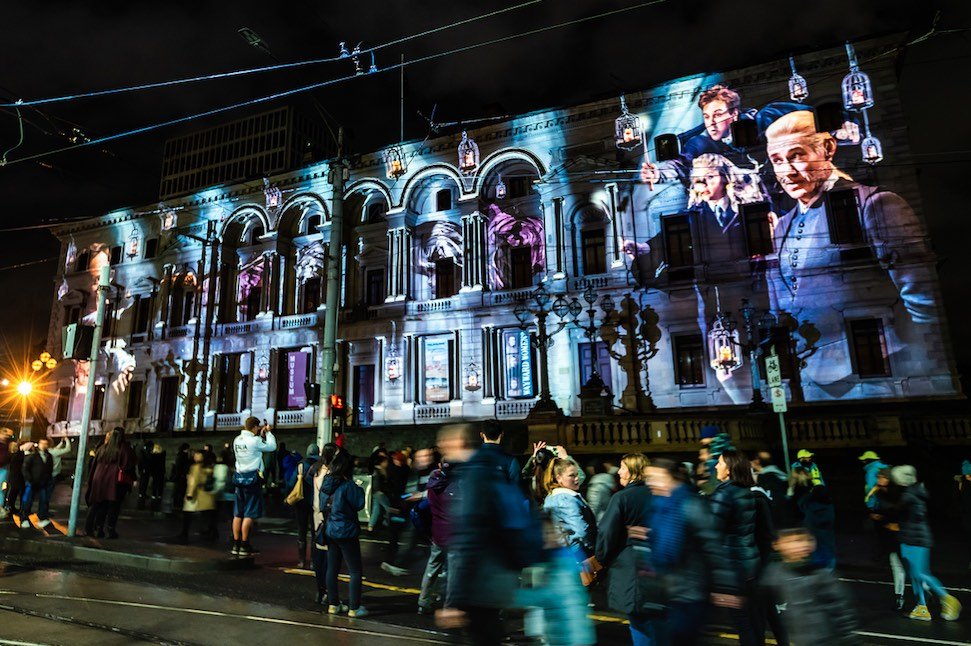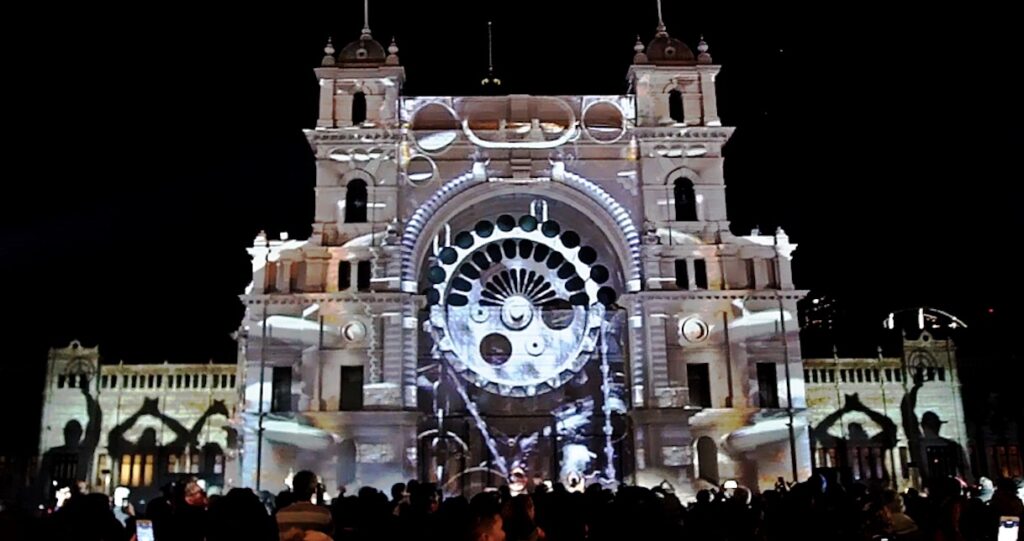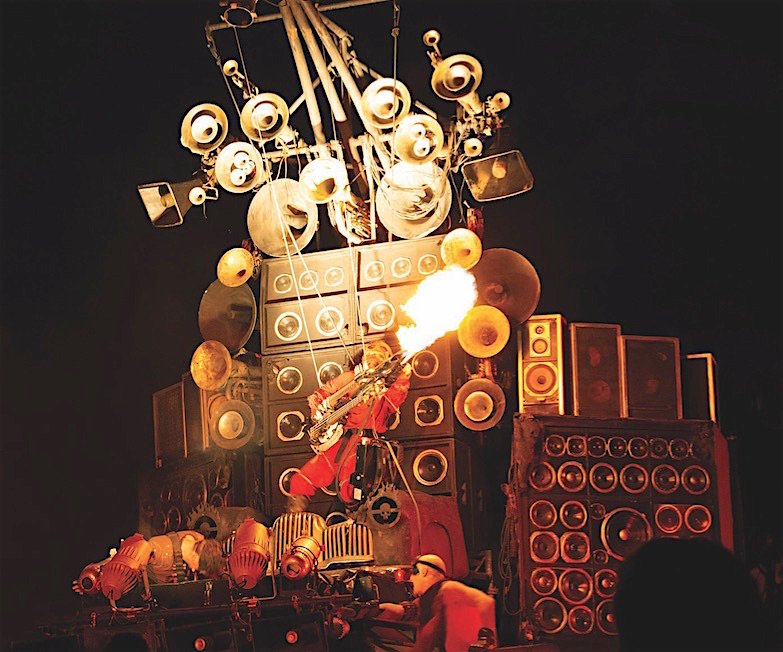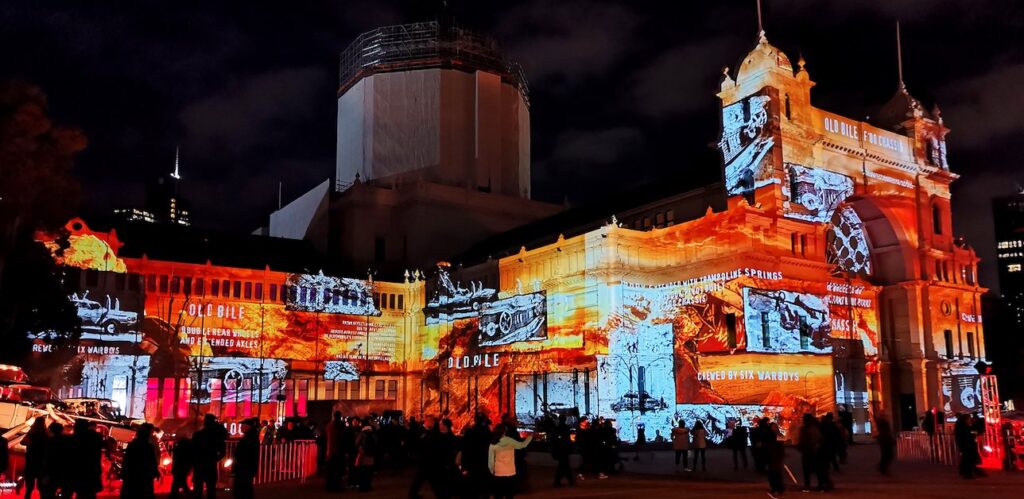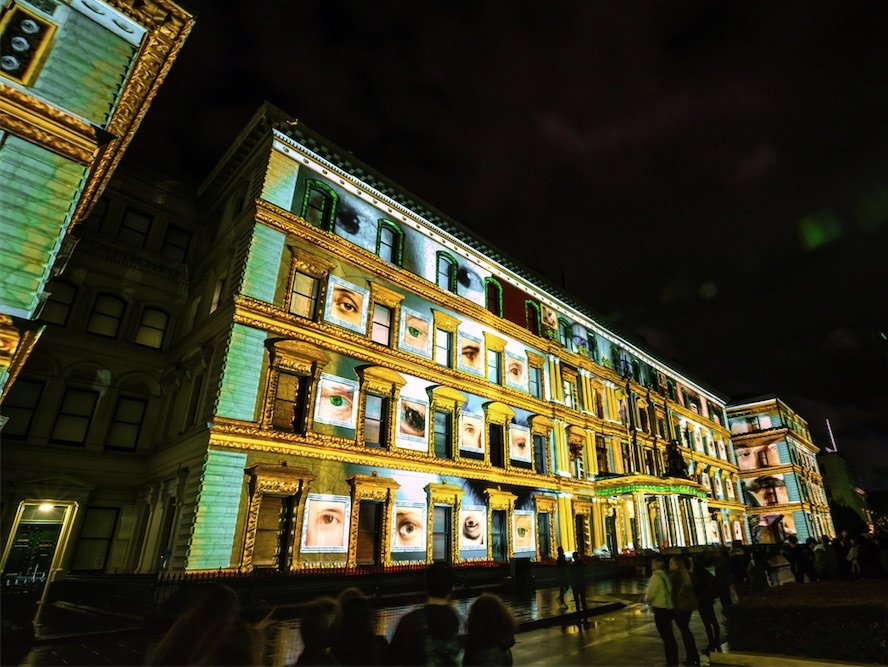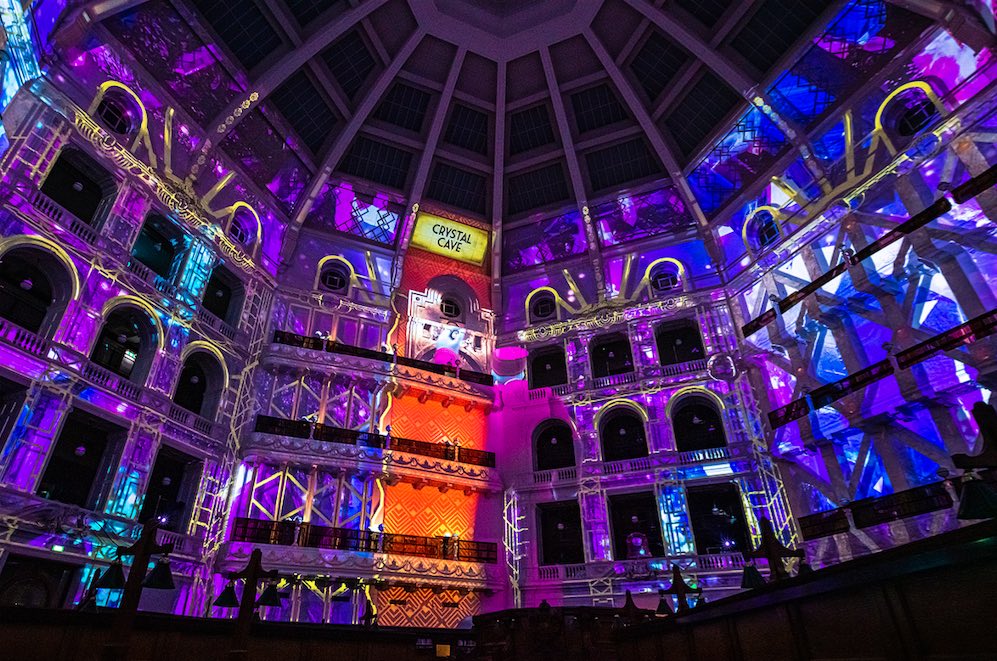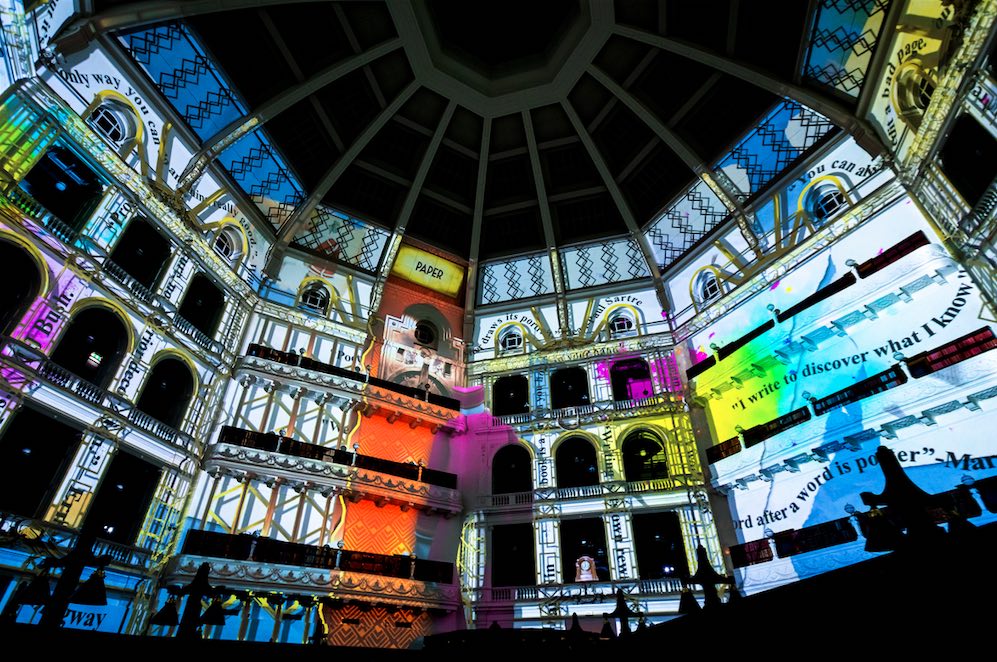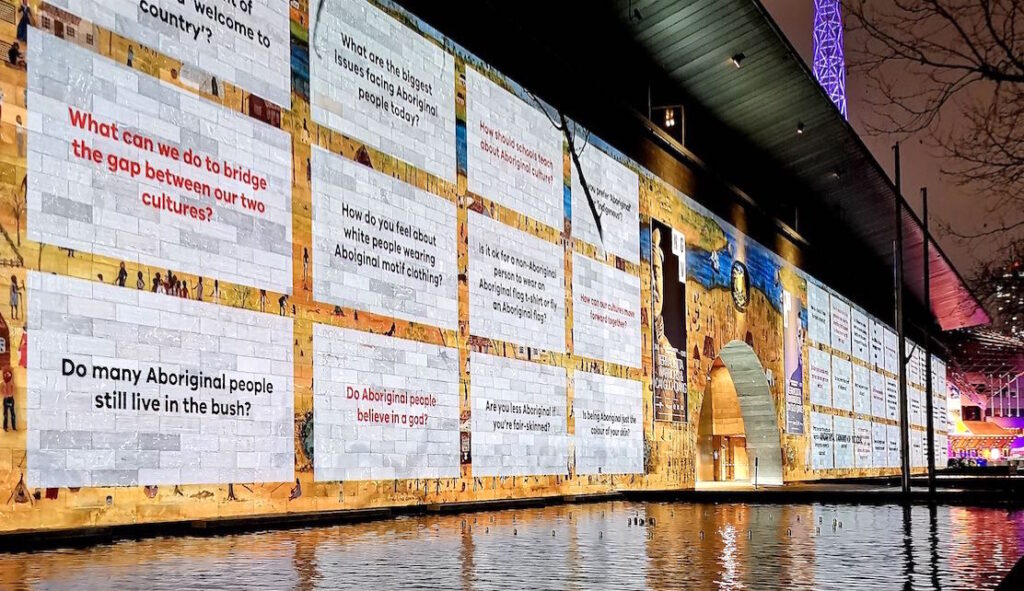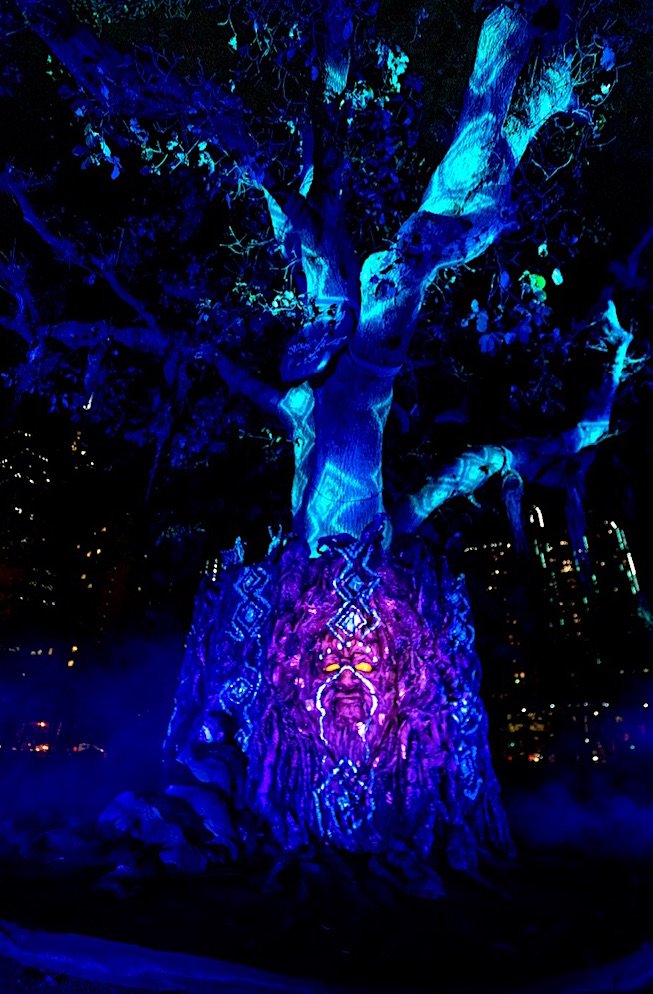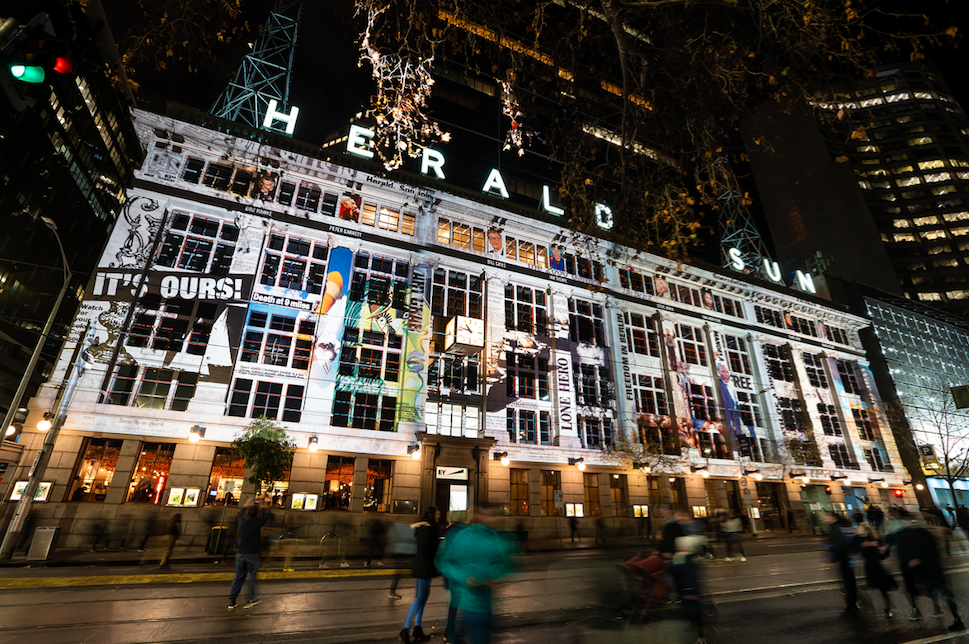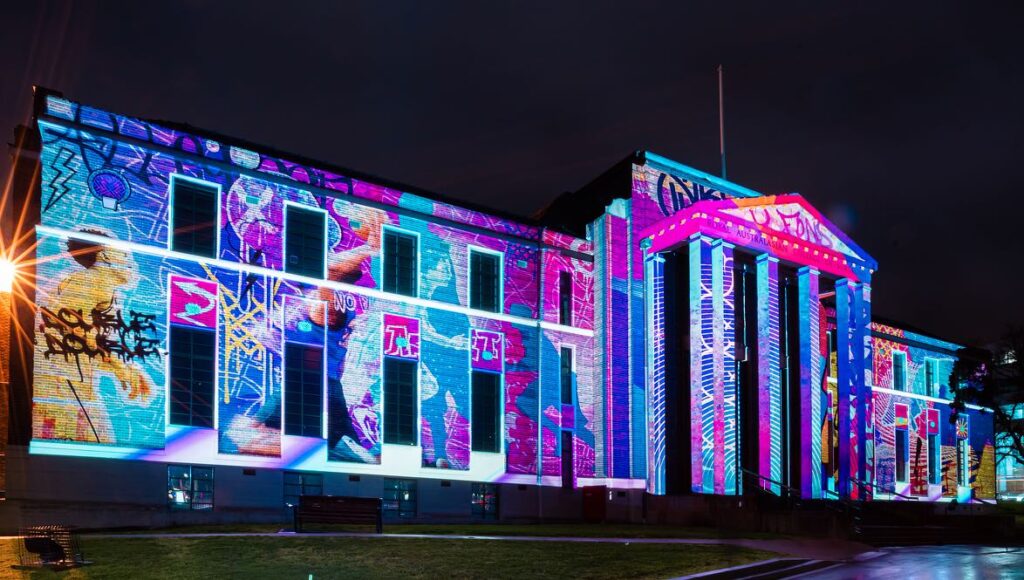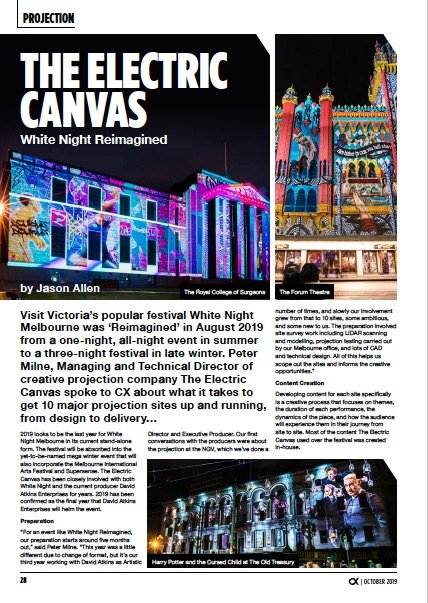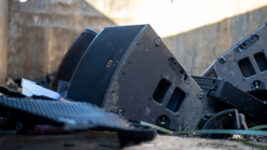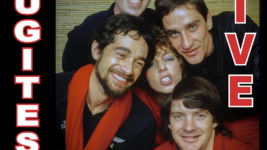News
17 Oct 2019
The Electric Canvas – White Night Reimagined
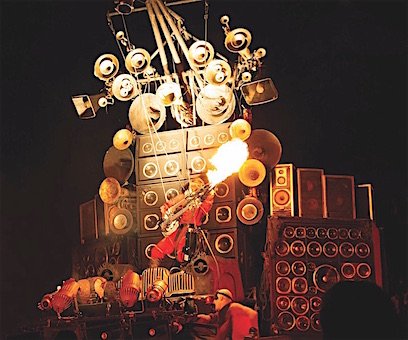
Subscribe to CX E-News
PROJECTION
by Jason Allen.
Visit Victoria’s popular festival White Night Melbourne was ‘Reimagined’ in August 2019 from a one-night, all-night event in summer to a three-night festival in late winter. Peter Milne, Managing and Technical Director of creative projection company The Electric Canvas spoke to CX about what it takes to get 10 major projection sites up and running, from design to delivery…
2019 looks to be the last year for White Night Melbourne in its current stand-alone form. The festival will be absorbed into the yet-to-be-named mega winter event that will also incorporate the Melbourne International Arts Festival and Supersense. The Electric Canvas has been closely involved with both White Night and the current producer David Atkins Enterprises for years. 2019 has been confirmed as the final year that David Atkins Enterprises will helm the event.
Preparation
“For an event like White Night Reimagined, our preparation starts around five months out,” said Peter Milne. “This year was a little different due to change of format, but it’s our third year working with David Atkins as Artistic Director and Executive Producer.
“Our first conversations with the producers were about the projection at the NGV, which we’ve done a number of times, and slowly our involvement grew from that to 10 sites, some ambitious, and some new to us.
“The preparation involved site survey work including LIDAR scanning and modelling, projection testing carried out by our Melbourne office, and lots of CAD and technical design. All of this helps us scope out the sites and informs the creative opportunities.”
Content Creation
Developing content for each site specifically is a creative process that focuses on themes, the duration of each performance, the dynamics of the piece, and how the audience will experience them in their journey from site to site.
Most of the content The Electric Canvas used over the festival was created in-house. “It was our content on most of our 10 sites,” elaborated Peter. “We have a content creation team of 16, including four permanent art staff.
“Most of our contractors have worked with us for many years. The ‘Deadly Questions’ piece at the NGV was pre-existing pieces to camera of Indigenous Victorians responding to a selection of frequently asked “deadly” questions, which we combined in a creative way with artwork by Indigenous artist Marlene Gilson.
“The ‘Mad Max Fury Road’ event at the Royal Exhibition Building used footage from the Fury Road movie, to which we added architectural and expressive elements to support the live performance.
“All of the content considers the audience; not just the theme, but also where they are, how long for, where they are coming from, and where they’re going.”
‘Mad Max: Fury Road’
A huge multimedia extravaganza featuring footage and actual cars, trucks and bikes from the movie, 25 performers, aerialists, lighting, fire, and pyros, plus an immersive multi-channel soundtrack, ‘Mad Max Fury Road’ was one of the most technically complex and physically enormous events at White Night Reimagined.
The heritage-listed REB was LIDAR scanned in order for the creatives to work using a combination of 2D and 3D techniques, making content that sometimes supported the performers, and sometimes was the focus of the show.
Seven Christie Boxer 30Ks mapped the content from Modulo Kinetic servers, which played out eight tracks of audio, as well as timecode. Lights (designed by Mark Hopkins) and pyro followed the timecode, and the eight-channel immersive audio was powerfully amplified by a distributed Meyer Sound system from Norwest, including hidden prac speakers in the cars.
The Electric Canvas’s Peter Janusz ran media, Resolution X’s Chad Spencer programmed and operated the lights from a grandMA2, Rowan Thornton fired the pyros via an LSC Clarity, and Roy Jones of Norwest handled audio from a Yamaha QL1.

Peter Janusz 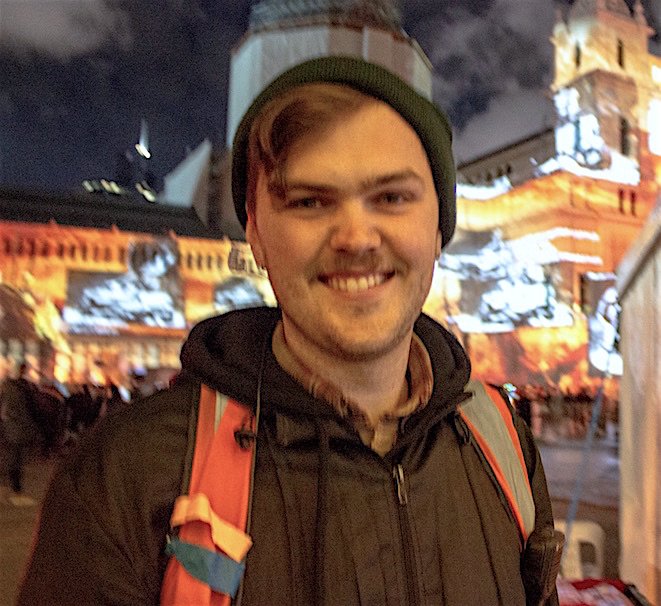
Roy Jones
7 x 30K Christie Boxer Projectors – Total approx. 9000 x 2000 pixels
HD-BaseT signal/network transport
Modulo Kinetic Media server system delivering 7 channels of video plus 8 channels of audio plus Timecode for Lighting sync
100% live backup for server system
3D Model and content workflow
Visual content by The Electric Canvas
Film assets provided by Warner Bros
Created by Director George Miller and Producers Kennedy Miller Mitchell
Artistic direction by David Atkins
Staged and Choreographed by Jason Coleman
Music composed and arranged by Dave Pierce
Tools of the Trade
The most common software tools used by The Electric Canvas’s creatives are Maxon’s Cinema 4D and Adobe’s AfterEffects, with some assistance from Adobe’s Photoshop. Each designer typically has their own collection of personal plug-ins that suit their workflow.
How the content is eventually rendered for projection depends on what style of projection is being used, and which media server is best suited to handle the show. It could be 2D, 3D, or a combination thereof, point-of-view, or a 3D model.
Considerations of budget, lead time, and appropriateness to the site also influence the choice. “Our preferred media servers are from Modulo Pi,” reported Peter. “They’re a French company established in 2010, and their server software has been used on many major events and installed in many museums and galleries.
“They make two excellent, solid platforms – the Modulo Player, which is cuelist-based, and Modulo Kinetic, which is timeline-based. We have a large stable of Modulo Pi servers, with 30 channels of Modulo Player and 30 channels of Modulo Kinetic. We also have 30 channels of Dataton’s Watchout.”
Projectors
The Electric Canvas put their trust in Christie projectors, which were found on most of their sites at White Night Reimagined. “We have nearly 100 Christie projectors in our stock with outputs of 20K or more,” Peter disclosed.
“We recently added some laser phosphor models, which we used on the Department of Education site. We also utilised some mercury lamp 30K projectors that we acquired for the Commonwealth Games.
“Of course, you can’t mix different lamp sources on the one site, so there’s a management process to allocate the correct projectors and lenses to each location.”
‘Sensoria’ – Dept of Education Building, Treasury Place
12 x 25K Christie Crimson Projectors (Laser) – Total approx. 7000×1900 pixels
Modulo Kinetic Media server system delivering 12 channels of video plus 2 channels of audio
3D Model and content workflow
Visual content and soundtrack by The Electric Canvas
Artistic direction by David Atkins
After bump-in, a few days before opening night, all equipment stays in-situ until bump-out. As this means there’s a lot of sensitive, expensive electronics out in the extremes of climate. The Electric Canvas has developed a number of techniques and strategies to keep the gear safe and reliable.
“We’ve had many years’ experience with installing projectors in all sorts of climates and conditions,” confided Peter.
“For example, most of the gear running on White Night has just has come out of a winter installation at Sovereign Hill in Ballarat, which is notoriously cold and dusty. There, we have the gear in weather-proof enclosures with chassis heaters for the projectors, along with filtered ventilation so we don’t suck in ice crystals and frozen dust.
“At the other extreme, concurrent with White Night, we have a large deployment of our gear at the Singapore Night Festival. Video projectors and servers have to be well looked after; they’re all on UPSs, and some are running off generators. We’ve learnt a lot of lessons over 23 years!”
‘Where Do Books Come From?’ – State Library of Victoria, Latrobe Reading Room
8 x 30K Christie Boxer Projectors – Total approx. 8600×2000 pixels
Watchout 6 Media server system delivering 8 channels of video plus 4 channels of audio
3D Model and content workflow
Visual content and soundtrack by The Electric Canvas
Artistic direction by David Atkins
‘Where Do Books Come From?’ – State Library of Victoria, Latrobe Reading Room
Crewing
White Night Reimagined ran from Thursday 22 August, finishing in the early hours of Sunday 25 August. The crew were loading trucks the week before, and were onsite from the previous Saturday, setting up before rehearsals and tech runs starting on the Monday.
It’s a physically challenging production, with 55 projectors in towers across 10 sites. “We usually provide our own scaff towers for accuracy and stability,” explained Peter, “but this year, for practical reasons, we utilised third-party providers, which reduced some of the physical effort on our part.
“During the event, there were 11 of us around the sites. Most sites could be automated, but there has to be provision for the activation of emergency messaging, which is a mandated safety requirement for large public events.”
‘Deadly Questions’ – National Gallery of Victoria
10 x Christie Roadster 20K projectors
Watchout 5 Media server system delivering 10 channels of video plus 2 channels of audio
Visual production by The Electric Canvas
Film assets provided by Aboriginal Victoria
Original artwork by Marlene Gilson
Music by Stephen Oakes, Vocals and Lyrics by Barry James Gilson
Artistic direction by David Atkins
Produced by DAE White Night, Aboriginal Victoria and the Victorian Department of Premier and Cabinet
Challenges on the Ground
With every site offering a different technical challenge, which ones stood out as noteworthy in 2019? “The Department of Education at Treasury Place was an interesting one,” Peter related.
“The challenge was that the projectors were quite close to the 80 metre wide façade, but we had to take into account that there were two audiences; one no more than 10 metres away, and another distant in Treasury Gardens.
“It came down to a combination of content, projectors, and lenses. Lenses aren’t that much of a concern, but lens manufacturers only guarantee accuracy of plus or minus 10%, which is a lot on a building at that distance with short, fixed focal lengths.
“It took some testing on-site to confirm that we were good for coverage. At the Royal Exhibition Building for ‘Mad Max Fury Road’ we made sure we did an onsite test in order to manage expectations of brightness and resolution.
“Cinematic content can appear a lot less bright when projected compared to graphic content, and the whole piece also had to consider the large vehicle props, the performers, lighting and pyro, so we wanted the producers and stakeholders to witness the tests.”
‘Story Tree… Bundjil Creation’ – Carlton Gardens
2 x Christie Roadster 20K projectors Modulo Player Media server delivering 2 channels of video plus 2 channels of audio plus Timecode for Lighting sync
POV tree mapping
Projection content by The Electric Canvas
Production design and puppetry by Balooga Entertainment
Design and story consultancy by Deanne Gilson
Voice-over by Marlene Gilson
Story consultancy, song and voice-over by Barry James Gilson
Other images from the festival:
CX Magazine – Oct 2019 Entertainment technology news and issues for Australia and New Zealand – in print and free online www.cxnetwork.com.au
© CX Media
Further reading: ‘Projection’ feature from Oct 2018 CX Magazine
Creative Projection Mapping with TDC’s Pete Lynn
Antartica – While You Were Sleeping
Choosing the Best Projector
Technology Engages Students in Learning
From Projector to Plate – Encore Serve up a Sensory Feast
3D Modular Panels for Projection Mapping
Borderless Projection in the Age of LED
Video Projection History – The Talaria
Simon Byrne: Let There Be Projected Light
Duncan Fry: Snow Job – The Projector from the Smithsonian
Subscribe
Published monthly since 1991, our famous AV industry magazine is free for download or pay for print. Subscribers also receive CX News, our free weekly email with the latest industry news and jobs.

